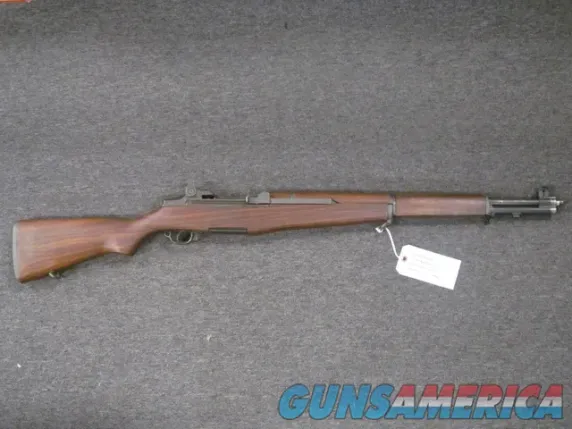
Estimated reading time: 10 minutes
Welcome to my in-depth review of the Marmot Superalloy 3-Person tent, where I embark on a journey to explore the features and performance of this ultralight shelter. I have used the older Marmot Tungsten 3P tent for nearly 5 years now with nothing but good things to say. When I saw they came out with a lighter-weight version that shaved off nearly 50% of the weight I knew I had to give it a shot. The Superalloy 3P tent has a pack weight of only 3 lbs 5.6 oz. With its innovative design and high-end materials, the Superalloy looks to be an excellent choice for backpackers, campers, and outdoor enthusiasts seeking a versatile and dependable shelter.
Table of contents
Marmot Superalloy 3P Specifications:
Floor Fabric: 100% Polyester, Ripstop
Fly Fabric: 100% Nylon, Ripstop
Footprint Included: NO
Packed Size: 19.7 x 4.9 in, 50.0 x 12.5 cm
Peak Height: 42.9 in, 109.0 cm
Floor Area: 37.7 sq ft, 3.5 sq m
Minimum Weight: 2 lbs 14.2 oz, 1,310 g
Number of Doors: 2
Number of Poles: 2
Pole Material: DAC NFL Aluminum
Vestibule Area: 12.92 sqft, 1.20 sqm
Weight and Portability
The standout feature of the Marmot Superalloy 3P tent in my mind is the minuscule weight. The minimum weight is 2lbs 14.2 oz, and the complete pack weight is 3lbs 5.6oz. For a 3P tent, this is very impressive. The packed size is 19.7 x 4.9 in which makes it easy to fit in a pack for backpacking. I have backpacked hundreds of miles with the older Tungsten model, and this one takes up less space while cutting half the weight. The phrase “ounces equals pounds” is always something that weighs on backpackers, but when you can shave 3 lbs off of your load with one upgrade that is a great feeling.
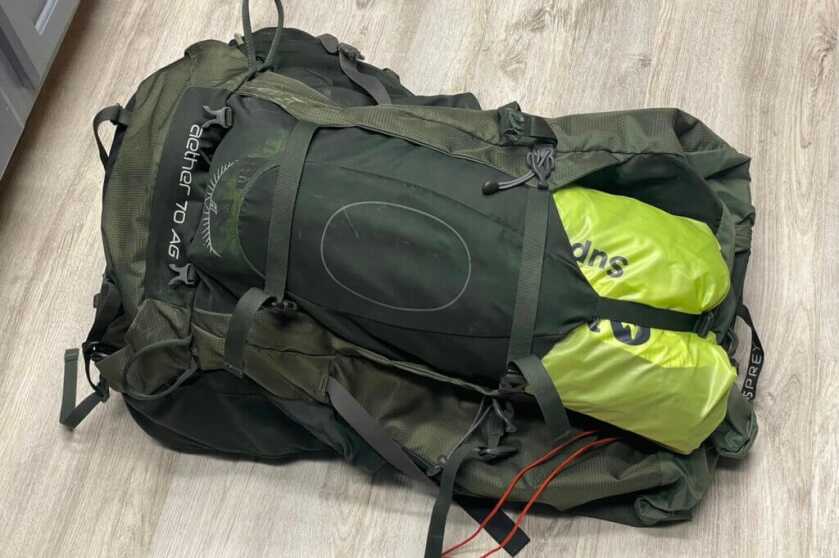
Marmot Tent Setup
Setting up the Superalloy 3P is a breeze. While it is helpful to have a second person, this is not necessary and the whole tent can be set up, and staked in within a matter of minutes. I found it interesting as it uses one breakdown pole that is used for two corners and the middle of the far side, and a cross pole to form the body. That means the two corners that don’t have poles need stakes to hold them in place. This makes this a semi-freestanding tent. The poles are secured by inserting them into metal grommets on the tent’s outer attachment points.
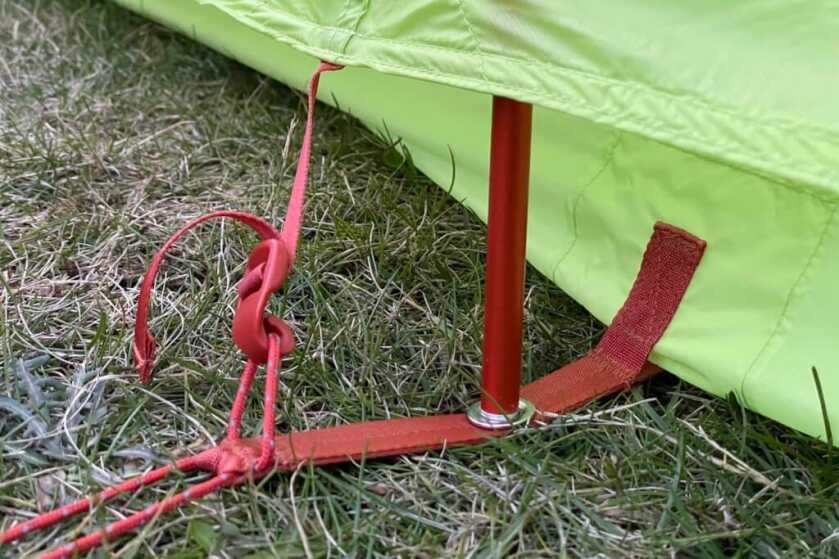
The tent holds onto the poles utilizing C clips that just pop over the poles. These are very quick and intuitive.

Something unique I noticed was the inner velcro loops on the rainfly to attach to the poles. While these can help keep the rainfly from flopping around in the wind, they are fairly difficult to access once the tent is set up. I also don’t think they are necessary, but I guess it’s better to be safe than sorry.
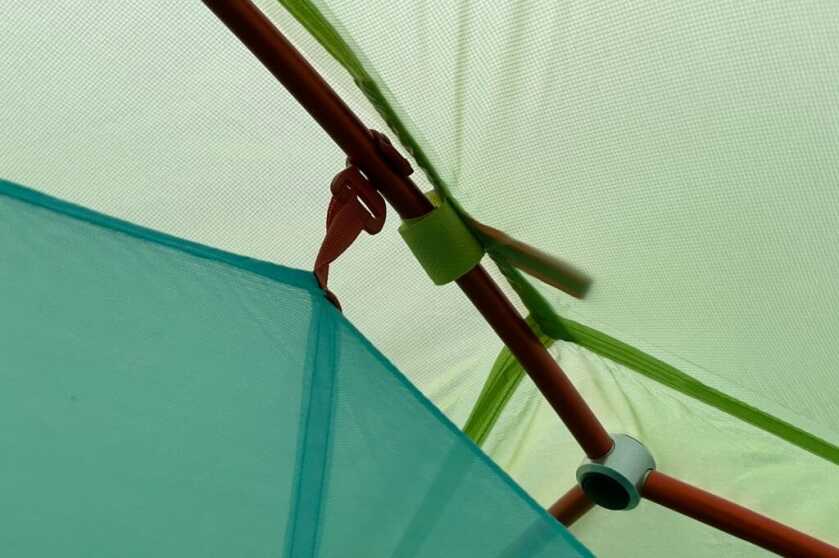
Between the rainfly and the main portion of the tent, there are 7 stake points to fully secure this tent. Simply pull the corners out to the proper positions, then insert the stakes through the outer cords on the attachment points.
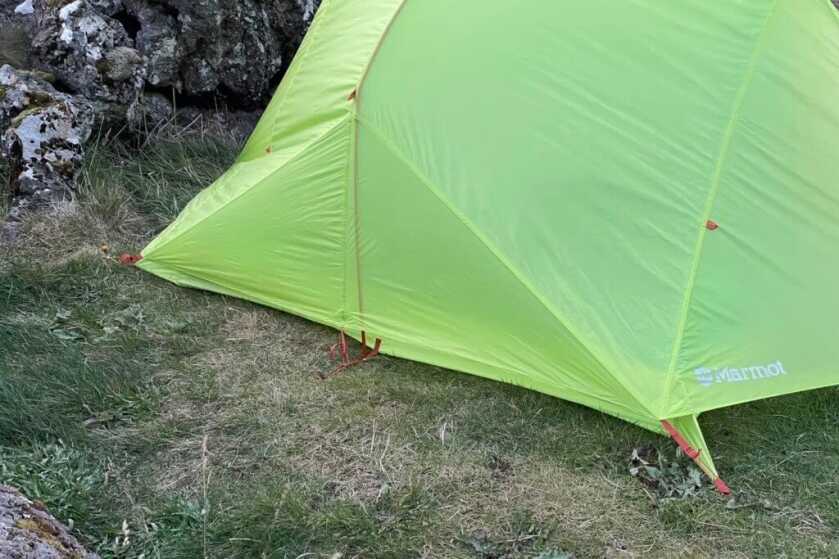
The stakes worked great but can be tough to pull out without any tools. What I would end up doing is eventually pulling one out, and then using it to pull out the rest.
Access and Entry
Marmot’s 3P Superallow features two doors on either side of the tent. Both doors in the tent and rainfly feature door tie-backs that can hold them open. The doors on the tent worked just fine, but the zippers on the rainfly caused me some issues. These bound up multiple times and actually caused the zipper cover flap to slightly tear.

Interior Space
For an ultralight 3P tent, I found the Superalloy to have a good amount of interior space. The floor, measuring 87×62 inches, offered ample length for me and sufficient width to accommodate both my wife, myself, and all our gear comfortably. The walls go up at a steep angle maximizing headroom throughout the tent. Inside the tent, Marmot includes a top lampshade that securely holds a headlamp or phone with the flashlight turned on. Not only does it hold a light, but it uses a type of fabric that disperses the light making the whole tent light up. I am a big fan of this feature.
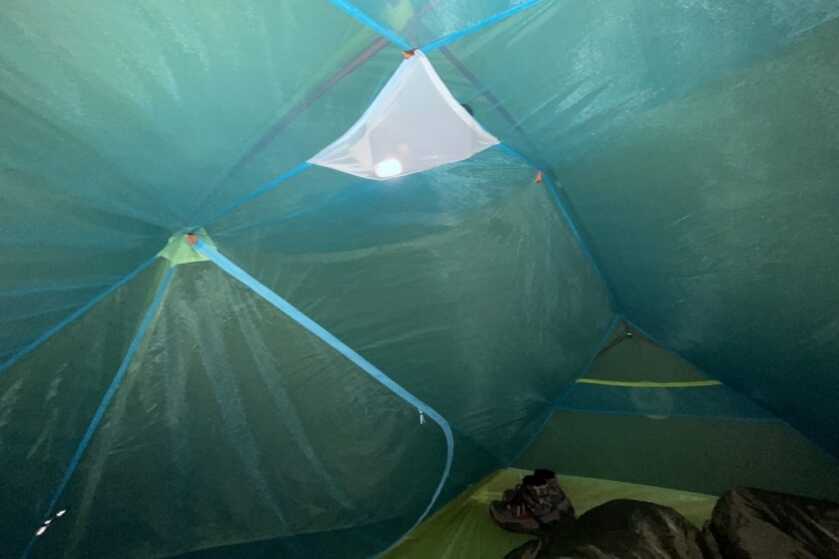
The interior also features two vestibules for gear storage but these are quite pathetic. Where other tents actually hold equipment like phones and wallets without issue, the 3P Superalloy vestibules sag to the floor with even just a cell phone in the pocket. In my opinion, these are worthless and provide no real benefit.
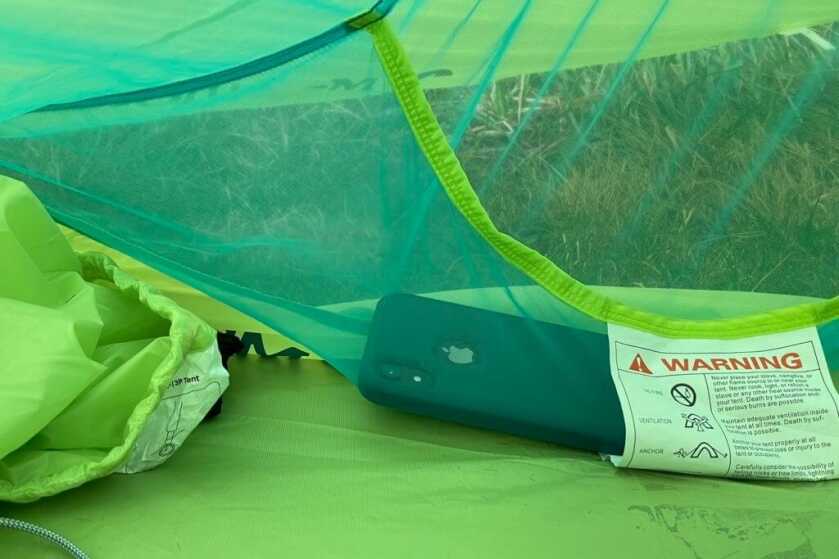
Ventilation
Another downside the the Superalloy 3P is that there is no ventilation. While my older Marmot Tungsten tent had a waterproof windowed vent on the top side by either door, the Superalloy has no such thing. This causes condensation to build up in the inner surface of the rainfly, and when the wind blows it into the mesh tent, that moisture can fall through and onto whoever is trying to sleep. Throughout my 10 nights camping in Iceland, I never had much of a problem with the water falling on me, but it was quite wet when packing up in the morning.
READ MORE: Backcountry Prep: Test It!
Marmot Superalloy Tent – Weather Resistance
When it comes to camping, everyone wants their tent to provide good shelter. This includes protection from both the wind and rain. During my testing, I spent 7 or more days camping with some amount of rain falling and never got wet while I was in the tent. The rainfly worked like a charm, and the seam-taped bathtub floor kept all the water from running into the tent. We stayed dry with all of our gear which is all we could really ask for.
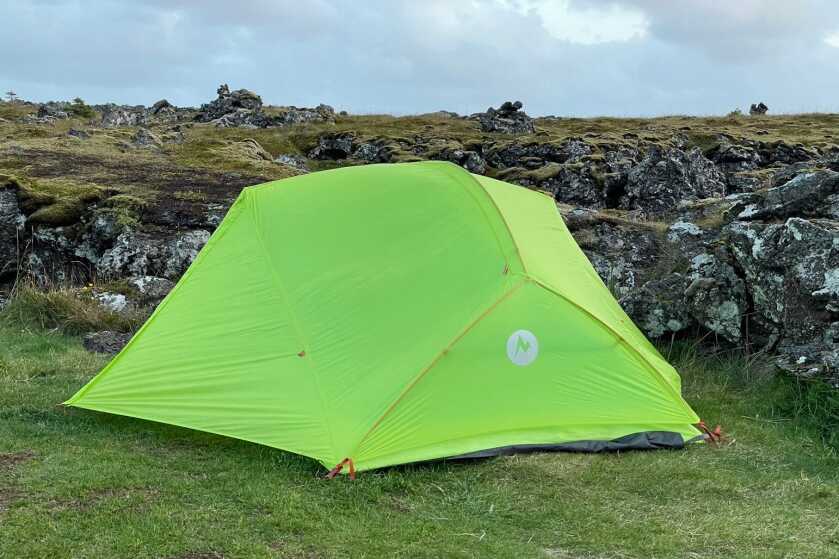
However, I will say that this tent is not the best suited for high-wind environments. The first night I tried to use this tent, we had wind gusts over 40mph and it ended up folding the tent in half. It stayed staked down, but the poles flexed enough to cause the roof to touch the floor. We ended up just sleeping in the car that night to take better shelter from the high winds and sideways rain.
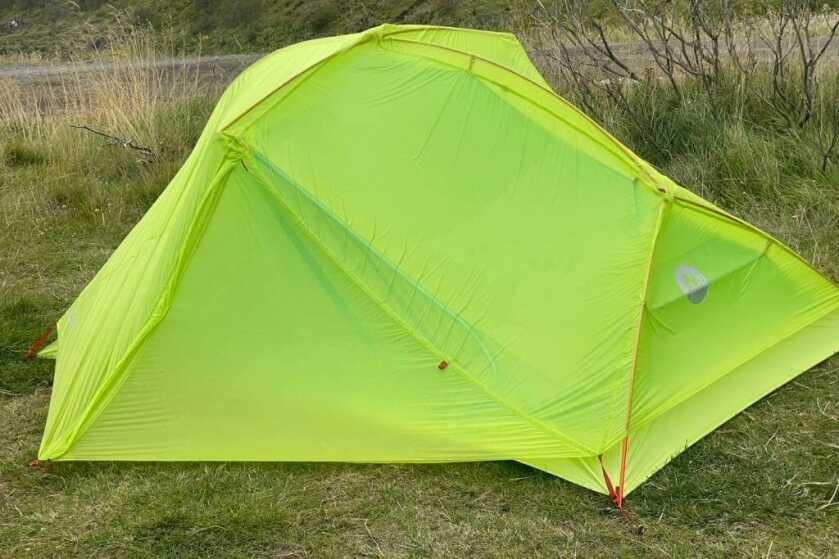
Marmot Tent Durability
When it comes to ultralight equipment I often question what trade-offs are being made. In the case of the Marmot Superalloy 3P, I had some concerns right off the bat. The first thing I worried about was how thin the floor was. It felt like those disposable plastic tablecloths that I would always poke my fingers through as a kid. Obviously, this is more durable than that, but it feels just as thin. I never had a puncture in the floor but I used a bottom footprint as a barrier between the tent and the ground. Long term, I am worried about how this will hold up. Fingers crossed though because so far so good.

As previously stated, the zipper on the rainfly would often catch on the flap that covers the zipper. This caused it to slightly tear which isn’t that big of a deal since it is just a flap, but is annoying nonetheless.
Available on GunsAmerica Now
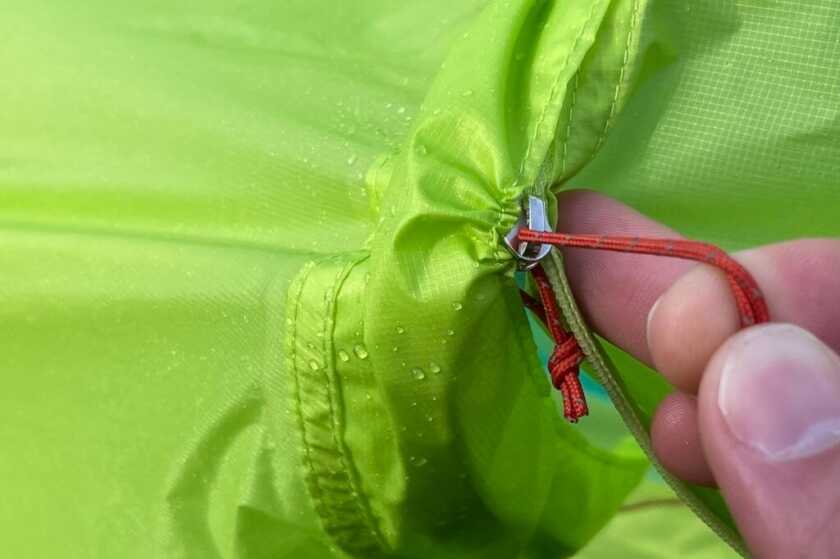
Iceland is known for wind and rain, and wind and rain is what we got. While this may be more than most people hiking through a forest may experience, it caused the outer stake straps to start tearing off from the rainfly. This could be a major issue down the road as this is a semi-freestanding tent. When the corners can no longer be staked in, there will be a fairly serious problem.
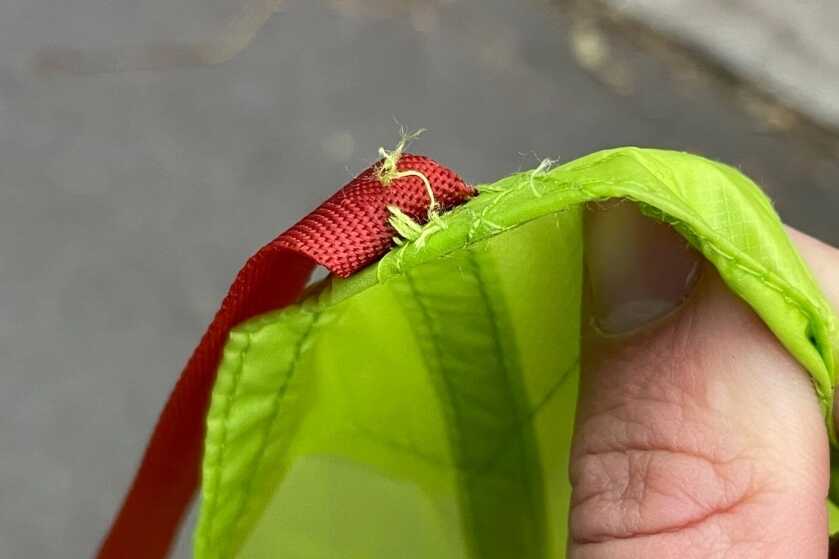
The last issue I had was with the aluminum tent stakes. These worked quite well but bent pretty quickly into our trip. While they aren’t super rigid, they still work, and I don’t see them failing anytime soon. They are just no longer straight.

Summary of the Marmot Superalloy 3P Tent
Overall I am still quite impressed with the Marmot Superalloy 3P tent. It has ample internal storage, keeps us dry through the wind and rain, and has a very small storage requirement with a pack weight of only 3lbs 5.6oz. As with all ultralight equipment, some durability is traded off for shaving weight. However, for those who avoid high-wind environments, this can be a solid option for backpacking trips. Marmot lists the Superalloy 3P with an MSRP of $489, but these tents can be found for around $120 less online at the time of writing.
*** Buy and Sell on GunsAmerica! ***










